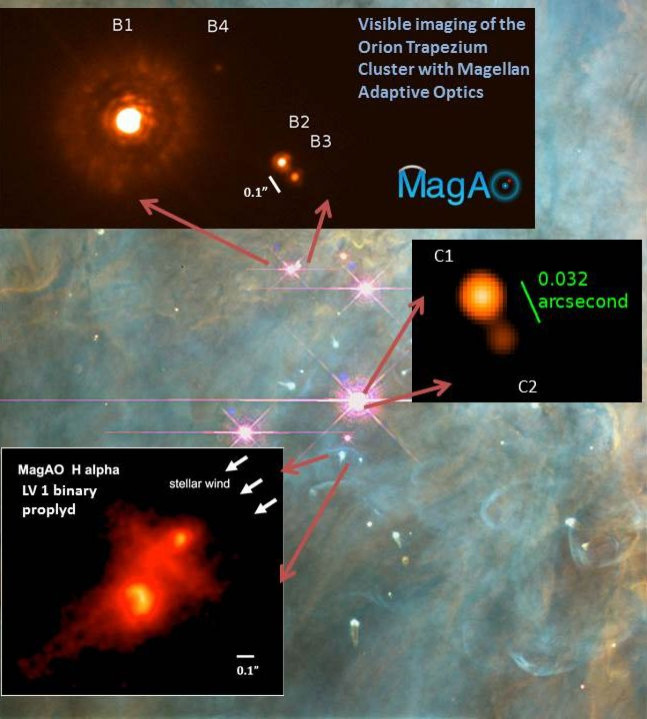Astronomers Capture Sharpest Images Of Space, Telescope Can ‘See A Baseball Diamond On The Moon’
Astronomers have developed a telescope mirror that has helped them capture some of the sharpest images of space ever recorded. In fact, the Magellan Adaptive Optics (MagAO) lets the Magellan telescope take images that are twice as sharp as those captured by the Hubble Space Telescope.

The new tools were developed over the course of 20 years. Laird Close, from the University of Arizona, was able to use the MagAO system, equipped on the Magellan telescope in Chile, to capture the sharpest images ever of space. The new optics system has already played a role in advancing research, according to Close, with three new published articles using images from the Magellan telescope.
Close said in a statement, “"We can, for the first time, make long-exposure images that resolve objects just 0.02 arcseconds across -- the equivalent of a dime viewed from more than a hundred miles away.”
The increase in sharpness is due to the telescope's design, which uses digital technology to take photos in a shorter wavelength, which leads to a sharper image. The researchers noted that previously, similar images had to be captured in infrared, a longer wavelength, but the shorter wavelength this camera uses creates images that are twice as sharp than before. The improvement is noticeable when compared to images taken by Hubble. The gain in quality is due to the mirror’s size: the Magellan telescope has a 21-foot diameter mirror, while Hubble’s mirror is only 8-feet in diameter.
Previous images in visible light were not as sharp due to atmospheric turbulence. As these large mirrors take in more light to produce an image, they are also subject to the various disturbances that can distort light or blur the image. Magellan’s Adaptive Secondary Mirror (ASM) adjusts for any turbulence, the university noted. The ASM has 585 different points on its surface that can change at a rate of 1,000 times per second. The astronomers equate this ability with having the Magellan telescope and its large mirror in space.
The three research projects using the Magellan telescope, with its MagAO system and the VisAO camera, had their discoveries published in the Astrophysical Journal.
In the first article, astronomers were able to view the binary stars of Theta 1 Ori C, located in the Orion Nebula, for the first time ever. Researchers knew the young star, approximately 1 million years old, was actually a binary star system, consisting of two stars, but the short distance between C1 and C2 prevented researchers from taking a direct image of the stars.
The second project focused on the stellar winds of Theta 1 Ori C and their effect on planet formation. The stellar winds affect the disk, made of gas and dust, surrounding the planet, and the telescope revealed the disks were shaped like teardrops, due to the wind and radiation given off by the massive Theta 1 Ori C, the star has a mass approximately 44 times that of the sun.
The third research project observed dust and gas distribution in these protoplanetary disks. The researchers determined there was less dust on the outer part of the disk than had been predicted. Close believes Theta 1 Ori C may have played a role in reducing the dust and gas inside the disk. The researchers say they are excited about the research possibilities of the new optics system, and as the telescope gets fine-tuned, there could be even more discoveries ahead.
© Copyright IBTimes 2024. All rights reserved.




















